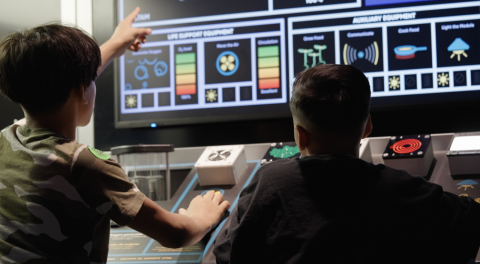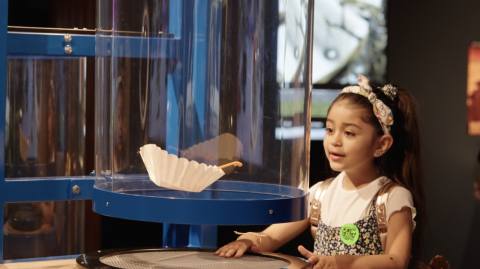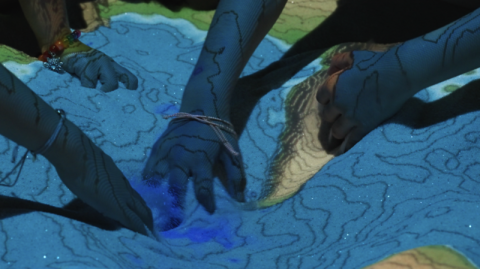Mission Future: Arizona 2045 is a 2,500 square foot interactive exhibition developed by Arizona State University (ASU) in collaboration with Arizona Science Center, NASA, and numerous additional local and national partners. Mission Future integrates authentic Earth and space science, imaginative storytelling, an immersive environment, and hands-on activities to explore what Arizona might be like in the year 2045. Told through the perspective of five diverse characters from the future, the exhibition explores some of the ways climate change will affect life on our home planet, as well as some of the opportunities future humans will have to study, live, and work off Earth. The exhibition opened in February, 2023 for long-term display at the Arizona Science Center.
Mission Future Arizona 2045 Exhibition from NISE Network on Vimeo.
Additional exhibition collaborators include:
- Arizona Science Center Teen Advisory Board
- Arizona State University School of Earth and Space Exploration
- Arizona State University School of Geographical Science and Urban Planning
- Arizona State University School of Life Sciences
- Arizona State University Resilient Visions CoLab
- NASA Jet Propulsion Laboratory
- NASA Science Mission Directorate Science Activation Program






Image Gallery
https://nisenet.smugmug.com/Mission-Future-Exhibition
Learn more
Summative Evaluation of the Mission Future exhibition
https://www.nisenet.org/catalog/summative-evaluation-mission-future-exhibition
Exhibition journal publication
Ostman, R., Anderson, A., Kollmann, E. K., & Martin, P. (2024). Mission Future: An experiential future. Exhibition 43(1), pp. 32–44.
https://www.nisenet.org/catalog/mission-future-exhibition-journal-article
Acknowledgement
This material is based upon work supported by NASA under cooperative agreement award numbers NNX16AC67A and 80NSSC18M0061. Any opinions, findings, and conclusions or recommendations expressed in this material are those of the author(s) and do not necessarily reflect the view of the National Aeronautics and Space Administration (NASA).
